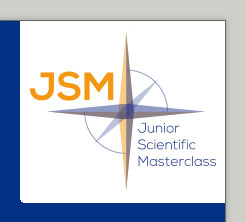Onderzoeksproject aanpassen
Projecten zijn uitsluitend aan te passen door bij het project behorende onderzoekers.
Geef via het uitrolmenu aan welke onderzoeker u bent. Nadat op u de button 'Edit project' heeft geklikt, wordt automatisch een e-mail verstuurd naar het e-mailadres van de onderzoeker die u heeft gespecificeerd.
In deze e-mail staat een link waarmee u het project kunt wijzigen.
Project properties
| Title | Key Biological Pathways for the Complex Mixed Phenotypes in Primary Childhood Ataxia |
|---|---|
| Keywords | Dystonia (medical)genetics Early Onset Ataxia |
| Researchers |
prof. dr. M.A.J. de Koning-Tijssen Dr. D.A. Sival Dr. D.S. Verbeek |
| Nature of the research | Clinical research |
| Fields of study | movement sciences neurology genetics |
| Background / introduction |
|---|
| In children, ataxia is a rare movement disorder with a complex and heterogeneous clinical presentation. In our large database including 150 children with ataxia, we have shown that mixed movement disorder features occur in more than 60% of the patients. In children with cerebellar involvement, the underlying mechanism for these complex and mixed movement disorder phenotypes is still unclear. |
| Research question / problem definition |
|---|
| What is the underlying key biological pathway for the complex mixed phenotypes in primary childhood ataxia’s? |
| Workplan |
|---|
|
The workplan consists of five steps. I. From a large database including video-recordings of patients with Primary Childhood Ataxia’s, the student will select specific phenotypic subgroups. II. Per phenotypic subgroup, the student will identify the underlying anatomic damage per patient (both inside and outside the cerebellum, from available cerebral MRI’s). This will provide the associated anatomic involvement per phenotypic subgroup. II. As a third step, we will use a genetic technique called “shared genetics” that uses gene co-expression network data to define the underlying key biologic pathways in association with the specific movement disorder phenotype. This will provide us information about the underlying biologic pathway that causes the complex movement disorder phenotype. V. Finally, we will combine the anatomical and biological information to unravel the cause for the specific phenotype. This study can be both chosen for a Pilot Project or for a Research Project. In perspective of a structural collaboration between Pediatric Neurology and Genetics this project is very suitable for subsequent continuation as MD PhD project. |
| References |
|---|
|
References 1. Nibbeling EA, Delnooz CC, de Koning TJ, Sinke RJ, Jinnah HA, Tijssen MA, Verbeek D. et al. Using the shared genetics of dystonia and ataxia to unravel their pathogenesis. Neurosci Biobehav Rev 2017;75:22-39. 2. Prudente CN, Hess EJ, Jinnah HA. Dystonia as a network disorder: what is the role of the cerebellum? Neuroscience 2014 28;260:23-35. 3. van Gaalen J, Giunti P, van de Warrenburg BP. Movement disorders in spinocerebellar ataxias. Mov Disord 2011;26(5):792-800. 4. Schreglmann SR, Riederer F, Galovic M, Ganos C, Kagi G, Waldvogel D, et al. Movement disorders in genetically confirmed mitochondrial disease and the putative role of the cerebellum. Mov Disord 2018;33(1):146-55. 5. Brandsma R, Lawerman TF, Kuiper MJ, Lunsing RJ, Burger H, Sival DA. Reliability and discriminant validity of ataxia rating scales in early onset ataxia. Dev Med Child Neurol 2017;59(4):427-32. 6. Pers TH, Karjalainen JM, Chan Y, Westra HJ, Wood AR, Yang J, et al. Biological interpretation of genome-wide association studies using predicted gene functions. Nat Commun 2015;6:5890. |


